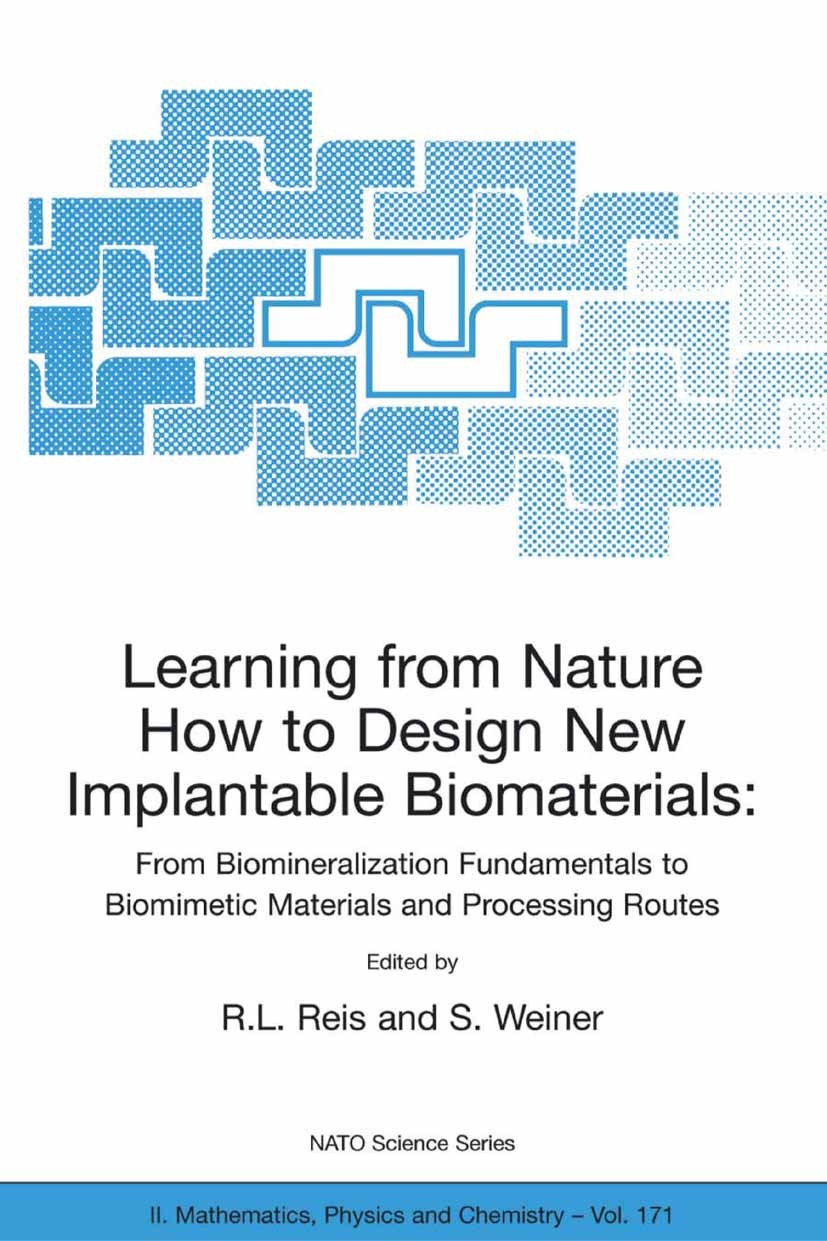| 书目名称 | Learning from Nature How to Design New Implantable Biomaterials: From Biomineralization Fundamentals |
| 副标题 | Proceedings of the N |
| 编辑 | R. L. Reis,S. Weiner |
| 视频video | http://file.papertrans.cn/583/582944/582944.mp4 |
| 丛书名称 | NATO Science Series II: Mathematics, Physics and Chemistry |
| 图书封面 |  |
| 描述 | The development of materials for any replacement or regeneration application should be based on the thorough understanding of the structure to be substituted. This is true in many fields, but particularly exigent in substitution and regeneration medicine. The demands upon the material properties largely depend on the site of application and the function it has to restore. Ideally, a replacement material should mimic the living tissue from a mechanical, chemical, biological and functional point of view. Of course this is much easier to write down than to implement in clinical practice. Mineralized tissues such as bones, tooth and shells have attracted, in the last few years, considerable interest as natural anisotropic composite structures with adequate mechanical properties. In fact, Nature is and will continue to be the best materials scientist ever. Who better than nature can design complex structures and control the intricate phenomena (processing routes) that lead to the final shape and structure (from the macro to the nano level) of living creatures? Who can combine biological and physico-chemical mechanisms in such a way that can build ideal structure-properties relationships |
| 出版日期 | Conference proceedings 20051st edition |
| 关键词 | Biomaterial; Brainstorming; Natur; Tissue Engineering; biomedical materials; bone; cells; science; tissue; bi |
| 版次 | 1 |
| doi | https://doi.org/10.1007/1-4020-2648-X |
| isbn_softcover | 978-1-4020-2647-8 |
| isbn_ebook | 978-1-4020-2648-5Series ISSN 1568-2609 |
| issn_series | 1568-2609 |
| copyright | Springer Science+Business Media B.V. 2005 |
 |Archiver|手机版|小黑屋|
派博传思国际
( 京公网安备110108008328)
GMT+8, 2025-12-15 14:14
|Archiver|手机版|小黑屋|
派博传思国际
( 京公网安备110108008328)
GMT+8, 2025-12-15 14:14


